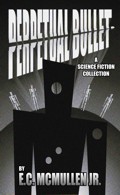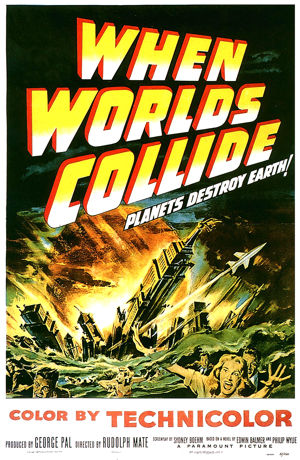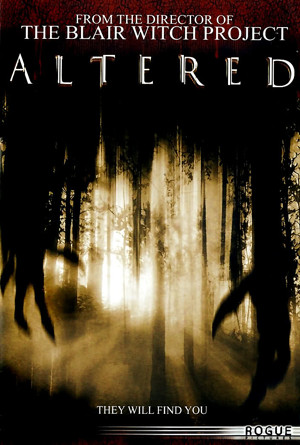When You Buy My Books
E.C. McMullen Jr.
PERPETUAL
BULLET
 "'Some People' ... may be the standout story in the book."
"'Some People' ... may be the standout story in the book."- John Grant, Infinityplus
E.C. McMullen Jr.
WILLOW BLUE
 "'Willow Blue' will burrow under your skin and stay there long after you've put the book down."
"'Willow Blue' will burrow under your skin and stay there long after you've put the book down."- Jeffrey Reddick, Creator of
FINAL DESTINATION
IN OTHER BOOKS
E.C. McMullen Jr.'s
short story
CEDO LOOKED LIKE PEOPLE
in the anthology
FEAR THE REAPER
 "This Ray Bradbury-esque is one of the most memorable and one of the more original stories I've read in a long time."
"This Ray Bradbury-esque is one of the most memorable and one of the more original stories I've read in a long time."- Steve Isaak,
Goodreads
HORROR 201:
The Silver Scream
 Filmmaker's Guidebook
Filmmaker's Guidebookfeaturing
RAY BRADBURY,
JOHN CARPENTER,
WES CRAVEN,
TOM HOLLAND,
E.C. McMULLEN Jr.,
GEORGE A. ROMERO,
and many more.
Extensively quoted in
 PHANTASM
PHANTASMEXHUMED
The Unauthorized Companion
Robert S. Rhine's
SATAN'S 3-RING
CIRCUS OF HELL
 Forward by
Forward byGAHAN WILSON &
FEO AMANTE.
Featuring comics by
ALEX PARDEE,
WILLIAM STOUT,
STEVE BISSETTE,
FRANK DIETZ,
JIM SMITH,
FRANK FORTE,
ERIC PIGORS,
MIKE SOSNOWSKI,
OMAHA PEREZ,
DAVID HARTMAN,
STEVEN MANNION,
and more!
And In
CINEMA
E.C. McMullen Jr.
Head Production Designer
 MINE GAMES
MINE GAMES(Starring:
JOSEPH CROSS, BRIANA EVIGAN,
ALEX MERAZ)
Dept. head
Special Effects Make-Up
(SFX MUA)
 A SIERRA NEVADA
A SIERRA NEVADAGUNFIGHT
(MICHAEL MADSEN & JOHN SAVAGE).
Production Designer
 UNIVERSAL DEAD
UNIVERSAL DEAD(DOUG JONES,
D.B. SWEENEY,
GARY GRAHAM)
Art Director
 THE CRUSADER
THE CRUSADER(COLIN CUNNINGHAM,
GARY GRAHAM)
 |
 |
SCIENCE MOMENT by E.C. McMullen Jr. |
|

USA Release: Nov. 15, 1951 Paramount SCIENCE MOMENT |
|||
!!!SCIENCE MOMENT!!!
Unlike the 1933 novel by Edwin Balmer and Philip Wylie, where two worlds really do collide, in this movie we have an entire solar system zipping through our solar system and headed for earth.
Dr. Hendron describes how the "rogue" star Bellus, which is 3 billion miles away, is traveling toward us at at nearly a million miles every two weeks and will enter our solar system in six months.
WRONG!
While our solar system and its planetary orbits are roughly shaped like a platter, our solar system is a sphere, as is the Oort cloud outside it, as is - perhaps - the Kuiper belt outside of it (jury is still out on that one but who knows what the James Webb telescope will reveal?). Dr. Hendron says Bellus is approaching from the direction of the Scorpius Constellation (visible only from the earth's Southern hemisphere), a large group of stars approximately 142 light years away and visible to the unaided eye in the night sky.
Bellus is 3 billion miles away! It's not going to take another 6 months to enter our solar system. It's closer than Pluto's orbital plane (in 1951 Pluto was considered a planet) and nearly in the orbital path of Neptune. If the star Bellus was only a red dwarf the size of Jupiter (1,000 Jupiters could fit inside Sol) everyone would already see it in the day time sky. It's a freaking star!
The audio makes it difficult to determine if Hendron said Bellus is "a dozen times larger than earth's" or "a dozen times larger than our sun": Both are unworkable.
A star only 12 times larger than our earth doesn't have the mass capable for the nuclear fusion to be a star that could support a life bearing planet (Neutron stars can be smaller but their density and power makes them a gravity and radiation monster of the cosmos. No earth-type planet could survive being only 19 million miles in orbit from it). Jupiter doesn't have the mass to be a star and its volume is 1000 times larger than earth.
Now let's look at "Dozens of times larger than our sun". I'm going with this interpretation because throughout the rest of the movie, Bellus is referred to as "The giant star Bellus".
The idea that it will be six months before a star "dozens of times larger than our sun" will be visible to the unaided eye on earth, when its already zipping through our solar system (and knocking out who knows how many other planets), is ridiculous. It'd be impossible for everyone on earth, with functioning eyes, not to see it.
Just to be clear, if it was a neutron star smaller than earth, it would be so damn bright it would be destroying life on earth from 3 billion miles away.
Moreover, if it's 3 billion miles away and moving toward us at about a million miles every two weeks, in 6 months it will only be 13 million miles closer. We currently have probes, like the Parker Solar Probe, that travel at nearly 400,000 miles an hour, as of this writing.
In 1951, every person in the audience with a basic public education and high school diploma knew that a billion was 1 million, 1,000 times. It would take well over 38 years for Bellus to travel a billion miles.
Many Times Larger
When you're talking stars you're generally talking about a solid sphere of hot plasma. Is Doctor Hendron talking about diameter, radius, or mass? For example in volume, sphere to sphere, Arcturus is 27 times larger than our sun, so roughly 1,700 Sols could fit inside it. Yet the mass of Arturus is only 1.5 times that of our sun.
There are those primitive tribes that count 1, 2, 3, then give up and say, "many".
Yeah, you can't get far on the survival scale with a culture that can't figure out how many limbs, fingers, toes, and teeth they have. So when Dr. Hendron says that Bellus is "a dozen times the size of our sun"? Nothing is remotely informative about that, but we can assume that a person with a Ph.D in their field is talking significantly more than two or three times the size.
So let's say that Bellus is merely 4 times the size (volume, not mass) of Sol.
Hendron says the planet Zyra is going to make a close pass, wiping out the coastal areas. Then, traveling at a million miles a day, 19 days later, its star, Bellus will collide with earth.
No.
About 1 million earths can fit in Sol. Bellus won't simply collide, but will swallow the earth. More accurate to describe earth colliding with Bellus as a grain of beach sand "colliding" with a blue whale. In fact, assuming Bellus is a minimum of 4 times larger than Sol, it will destroy our sun.
Also
Drs. Bronson, Hendron, and Frye, theorize that the planet Zyra may be inhabitable to human life. How likely is that if it orbits a sun many times the size of our own from a rough 19 million miles away?
At its perigee, Mercury is 23.4 million miles from Sol and is a blasted, virtually atmosphere-less stone. A vaporized surface burned down to the mantle is what would happen to earth by the time a giant star like Bellus got within around 23 days away from it.
LINKS -
NASA: Parker Solar Probe Completes a Record-Setting Swing by the Sun
SPACE: Size of Smallest Possible Star Pinned Down
Astronomy: How small are neutron stars?
EarthSky: What Is A Neutron Star?




This review copyright 2008 E.C.McMullen Jr.

|
| GET SOME CLOTHES ON | |
| YOU MIGHT ALSO ENJOY (Sub-Section: ALIENS STARTED IT!) |
||
 |
 |
 |
| ALTERED MOVIE REVIEW |
ATTACK THE BLOCK MOVIE REVIEW |
THE OBJECTIVE MOVIE REVIEW |
| FEO AMANTE'S HORROR THRILLER Created by: E.C.MULLEN JR. |
| COME FOLLOW ME @ Amazon |
| ECMJr |
| Feo Blog |
| IMDb |
| Stage32 |
| YouTube |
| Zazzle Shop |

